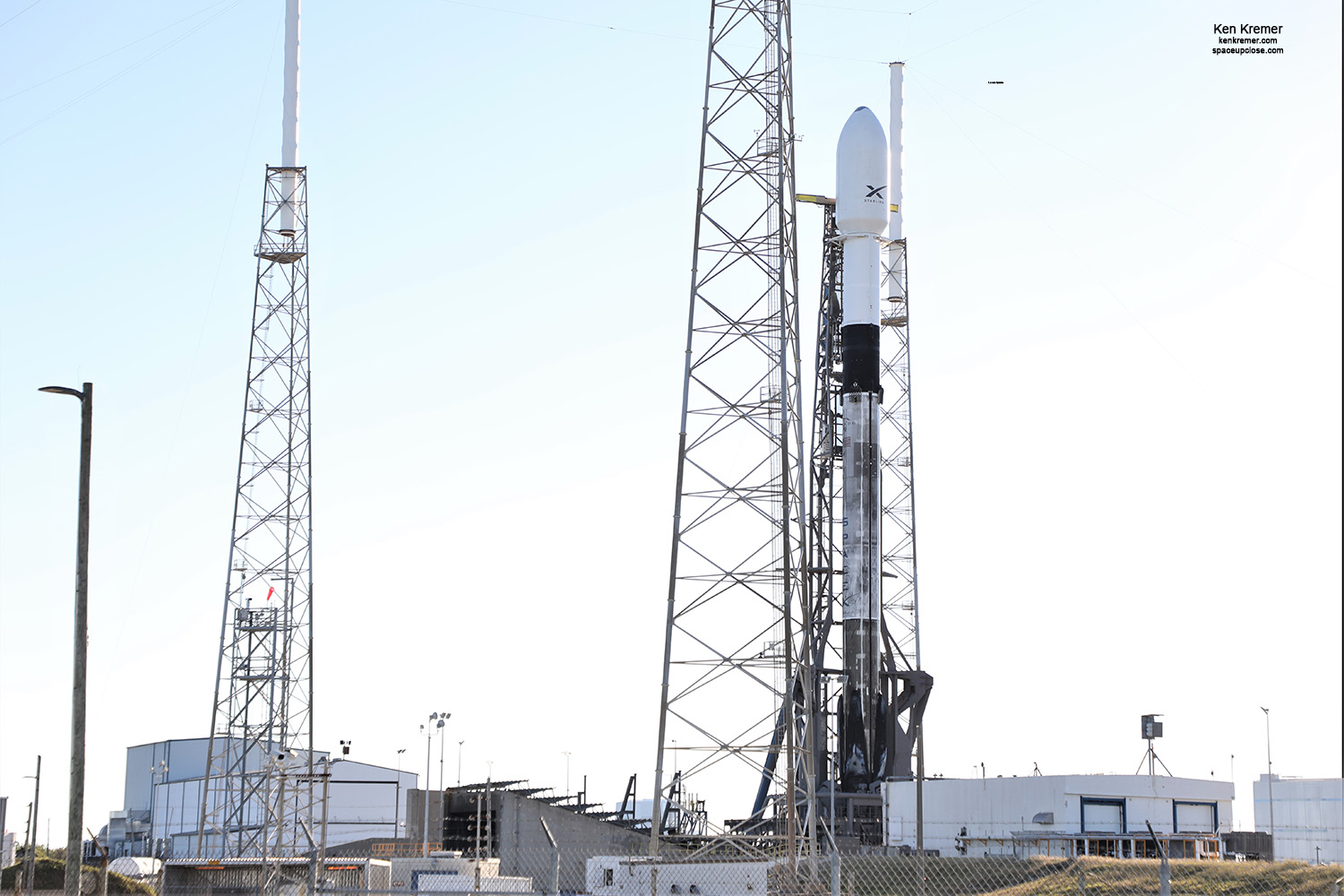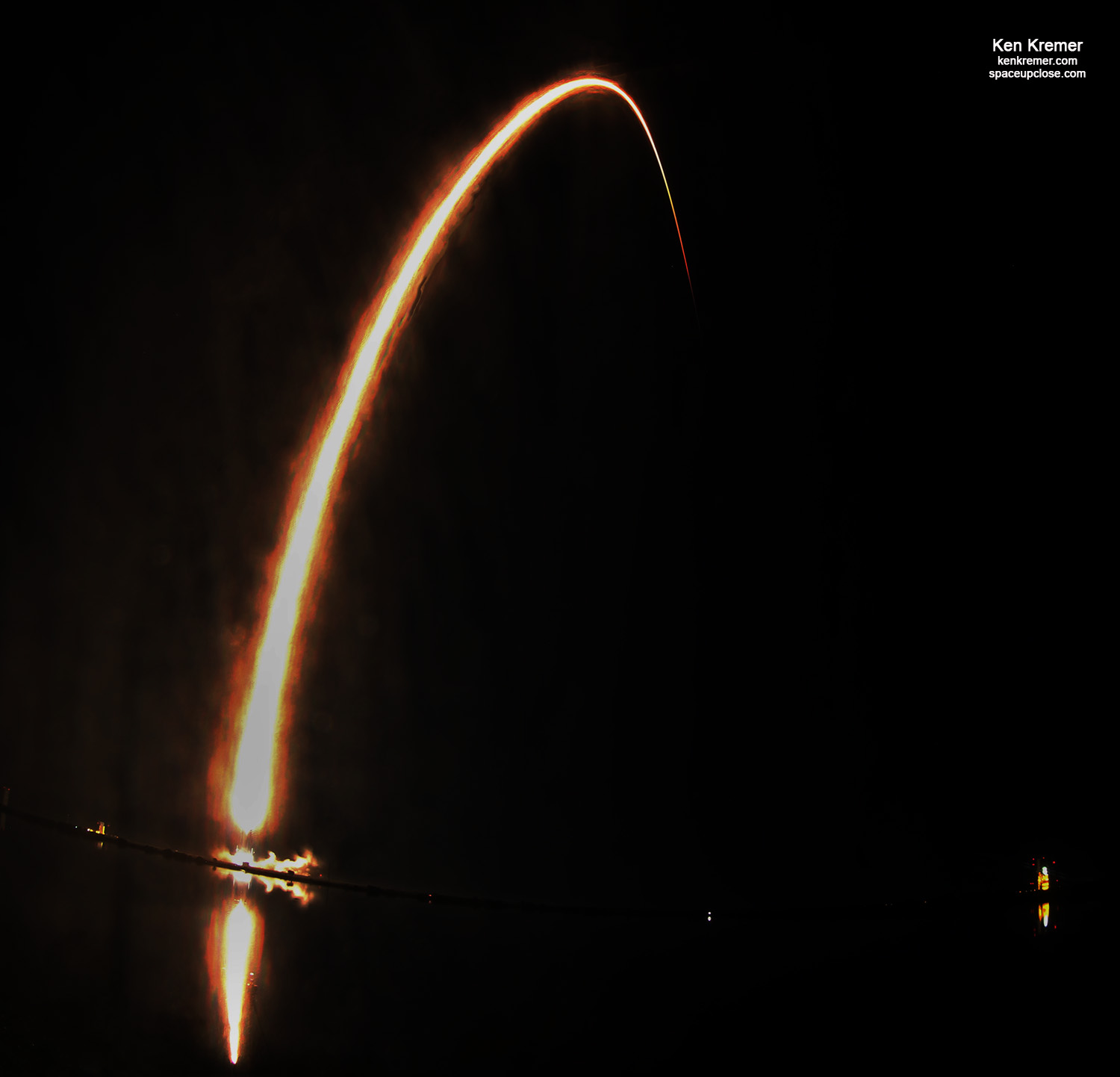
SpaceX Falcon 9 streaks to orbit from Space Launch Complex-40 on Cape Canaveral Air Force Station, FL on 3rd Starlink mission after launch Jan. 6, 2020 at 9:19 p.m. EST. The 1st stage booster is only the second one to launch 4 times. ULA Delta IV rocket stands inside launch tower at right at Complex 37. Credit: Ken Kremer/kenkremer.com/spaceupclose.com
For SpaceUpClose.com & RocketSTEM
CAPE CANAVERAL AIR FORCE STATION, FL – The first launch of 2020 streaked to orbit Monday evening Jan 6 kicking off what is expected to be a busy year at the Florida Space Coast with a breathtaking nighttime launch by SpaceX of the 3rd batch of their Starlink broadband internet satellites on a used Falcon 9 thereby enlarging the constellation to some 180 – under outstanding weather conditions.
The blastoff of the recycled Falcon 9 1st stage also marked the first launch carried out under the auspices of the new United States Space Force – just signed into law by President Trump on Dec. 20, 2019.
In another major milestone in rocket recycling the mission marks only the second time use of a reused first stage booster for the fourth time.
The payload comprised the third batch of 60 SpaceX built and owned Starlink broadband satellites launching to LEO with an overall mass of about 7.7 tons. Each spacecraft has a mass of approximately 575 pounds (260 kilograms).
Liftoff of the 3rd Starlink mission – officially designated as Starlink 2 – took place during an instantaneous launch window at 9:19 p.m. EST Monday, Jan. 6 (0219 GMT Tuesday, Jan. 7) from Space Launch Complex-40 (SLC-40) on Cape Canaveral Air Force Station, FL.
On this flight, one of the 60 Starlink satellites has been covered with an experimental less reflective coating to test the ability to reduce reflected light which has stirred serious concern among astronomers because it can interfere and cause harm to earth based scientific telescopic observations.
Enjoy our Space UpClose gallery of images of Monday’s spectacular blastoff.
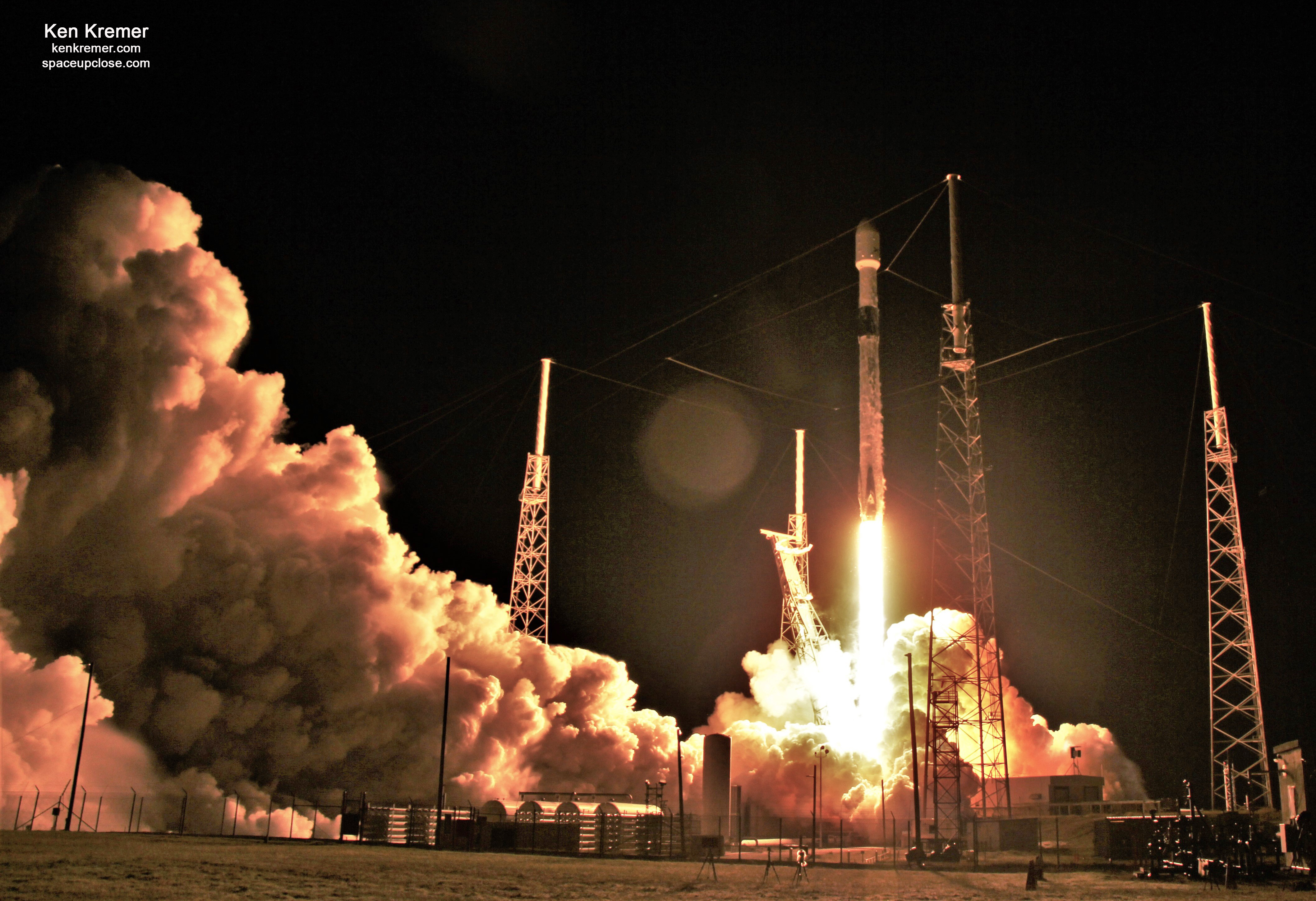
SpaceX also successfully soft landed the Falcon 9 first stage for the fourth time – in this case on the “Of Course I Still Love You” (OCISLY) droneship deployed some 628 km downrange in the Atlantic Ocean.
This counts as the 48th successful booster landing recovery by sea or by land.
Falcon 9 first stage has landed on the Of Course I Still Love You droneship – SpaceX’s 48th successful landing of an orbital class rocket booster pic.twitter.com/wLal1xfsjO
— SpaceX (@SpaceX) January 7, 2020
Thus the booster is set up to launch for a record fifth time perhaps later this year.
It flew on three prior missions on Starlink 1 in May 2019 as well as Iridium-8 and the Telstar 18 VANTAGE mission.
The Block 5 Falcon 9 first stages are designed to launch 10 times each with minimal refurbishment between flights.
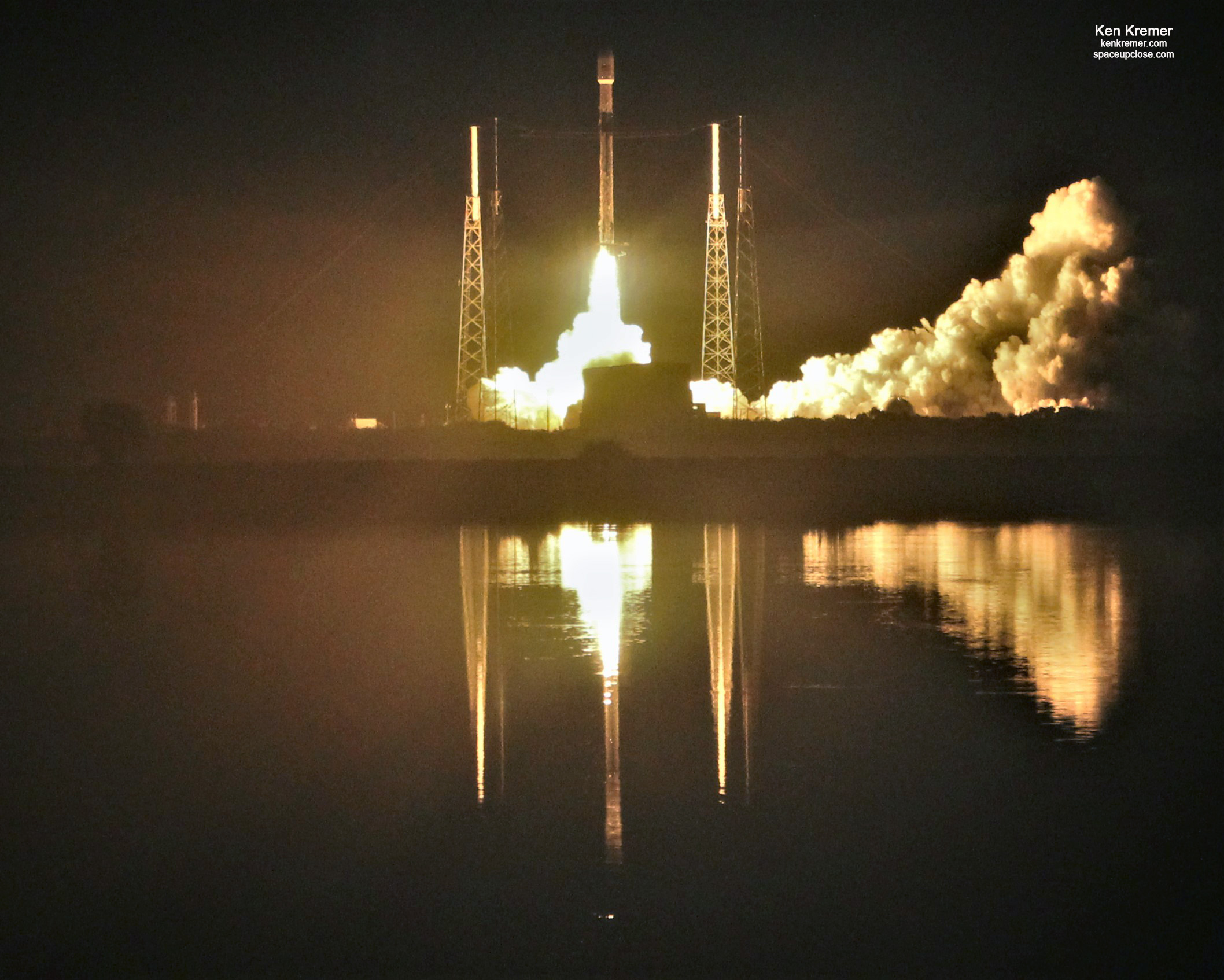
The two stage Falcon 9 rocket stands 229 feet (70 meters) tall.
These 60 new Starlink satellites join the first two batches of 60 launched in May and November of 2019.
See our Space UpClose photos from the Starlink launches in May and November and earlier articles.
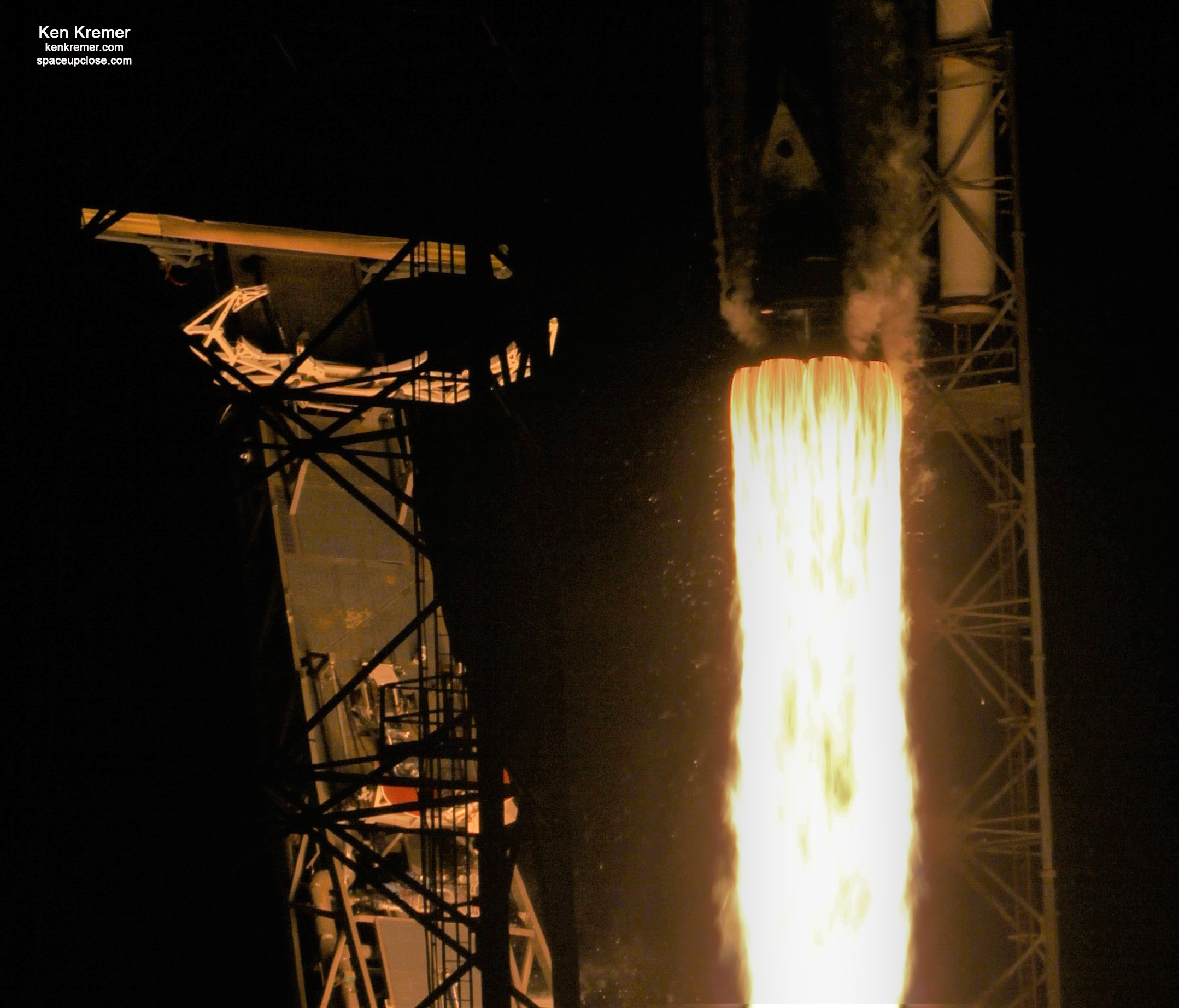
The 3rd Starlink mission is also significant in that it marks the opening of the new launch season as the 1st US launch of 2020 and the new decade – and the start of a very busy month and year ahead for rockets from a number of commercial providers that will almost certainly include the first human launches from US soil in over 8 long years.
Furthermore SpaceX also becomes the owner of the largest fleet of Earth orbiting satellites – numbering some 180 satellites delivered to orbit – following Monday evenings successful delivery.
The Starlink satellites began deployment about 61 minutes after liftoff as planned.
“Successful deployment of 60 Starlink satellites confirmed!” SpaceX tweeted with video.
Successful deployment of 60 Starlink satellites confirmed! pic.twitter.com/hA8eUp7dNI
— SpaceX (@SpaceX) January 7, 2020
This third Starlink launch is officially designated as Starlink 2.
The goal of Starlink is to create a network that will help provide internet services to those who are not yet connected, and to provide reliable and affordable internet across the globe.
“Starlink is a next-generation satellite network capable of connecting the globe, especially reaching those who are not yet connected, with reliable and affordable broadband internet services,” says SpaceX.
SpaceX CEO Elon Musk has made rocket recycling a top priority in order to slash launch costs.
Thus SpaceX attempted to recover the payload fairings as well as the 1st stage.
Musk says that the fairings cost approximately $6 million or roughly 10% of the approximate cost of $60 million for a new Falcon 9 rocket.
The SpaceX naval fleet now includes 2 fairing recovery ships outfitted with giant nets to attempt to catch both halves some 733 km downrange before they splash into the Atlantic approximately 45 minutes after liftoff – namely GO MS TREE and GO MS CHIEF.
Only one- GO MS TREE – was dispatched this time and was unable to catch the fairing.
However both fairing halves were hauled out of the Atlantic sea waters by accompanying recovery ship.
The fairing recovery vessels and droneship are new steaming back to Port Canaveral for arrival in a few days.
The first launch of 2020 not only brings new beginnings for Florida’s Space Coast, but also the entire rocket launch community. Monday’s scheduled SpaceX launch of the next round of Starlink satellites from Cape Canaveral Air Force Station was the first official launch of the U.S. Space Force, said the Air Force.
“I’m excited for the 45th Space Wing to be a part of the U.S. Space Force,” said Brig. Gen. Doug Schiess, 45th Space Wing commander. “Our wing will continue to do what we’ve excelled at for nearly 70 years: we’ll continue our mission of providing assured access to space for warfighters and our Nation.”
President Donald Trump signed a measure creating a U.S Space Force as the sixth branch of the military on Dec. 20th after the U.S. Senate passed the fiscal 2020 National Defense Authorization Act, a defense policy bill establishing the Space Force.
The Starlink satellites are manufactured by SpaceX – as well as the rockets.
The constellation could eventually number over 20,000 or more satellites in low earth orbit.
“The Starlink satellites will deploy at an altitude of 290 km. Prior to orbit raise, SpaceX engineers will conduct data reviews to ensure all Starlink satellites are operating as intended. Once the checkouts are complete, the satellites will then use their onboard ion thrusters to move into their intended orbits.”
“Starlink satellite flight operations take place in three phases: orbit raise, onstation service, and deorbit. After deployment, over the course of one to four months, the satellites use their onboard thrusters to raise from an altitude of 290 km to 550 km. During this phase of flight the satellites are closely clustered and their solar arrays are in a special low-drag configuration, making them appear more visible from the ground.”
“Once the satellites reach their operational altitude of 550km and begin onstation service, their orientation changes and the satellites become significantly less visible from the ground. On this flight, SpaceX is also testing an experimental darkening treatment on one satellite to further reduce the albedo of the body of the satellites.”
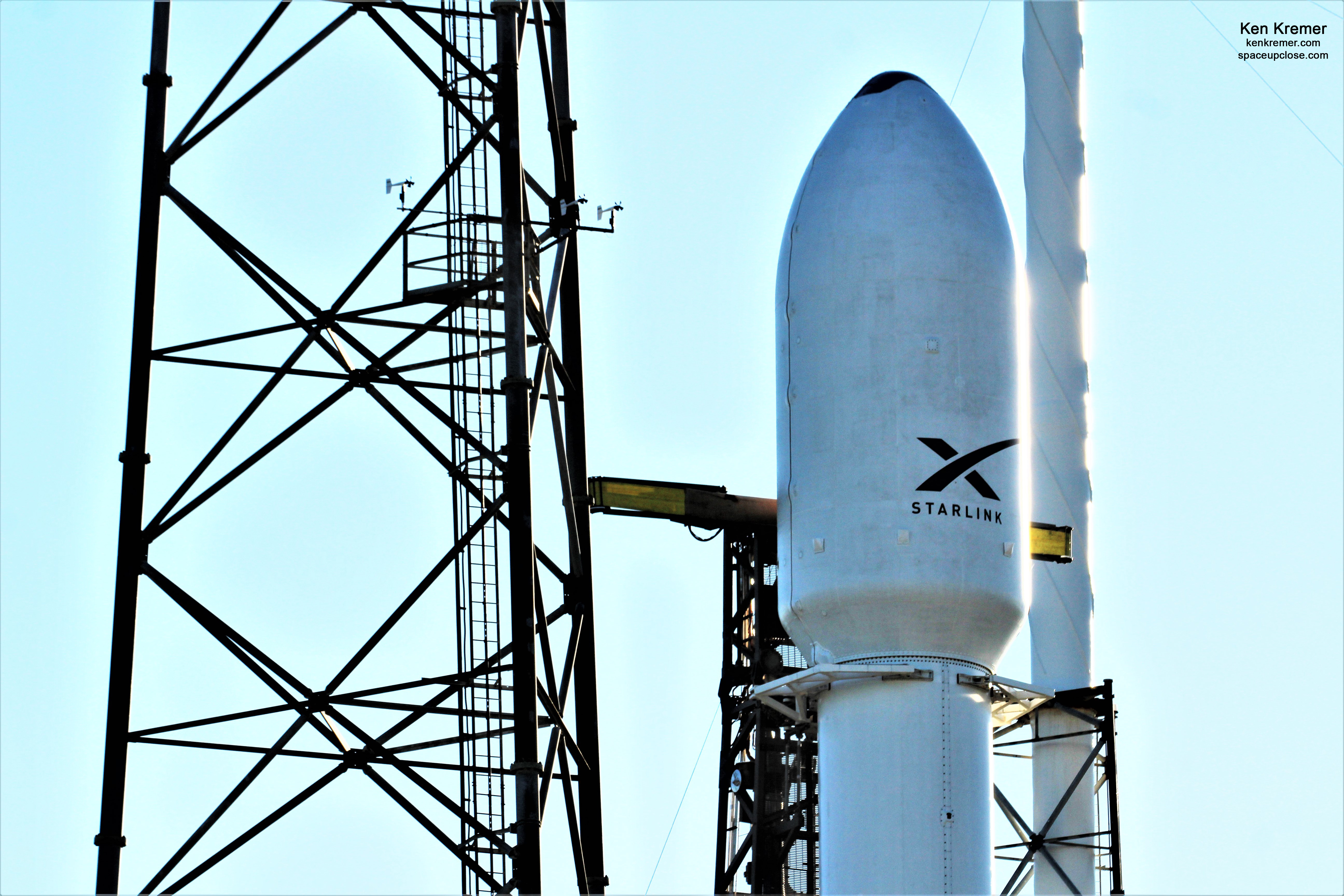
SpaceX currently plans at least two additional Falcon 9 launches in January.
Namely the InFlight Abort Test (IFA) NET Jan 18 to demonstrate the emergency abort capability with a Crew Dragon for NASA involving the ability to save the astronauts from a failing rocket in flight – and another Starlink mission in later January.
My commentary and photos about the SpaceX Starlink launch and SpaceX Force were featured on WESH 2 News NBC TV News Orlando and WFTV Channel 9 ABC TV News Orlando on the Jan. 6 evening and overnight news programs multiple times. wftv.com https://wesh.com

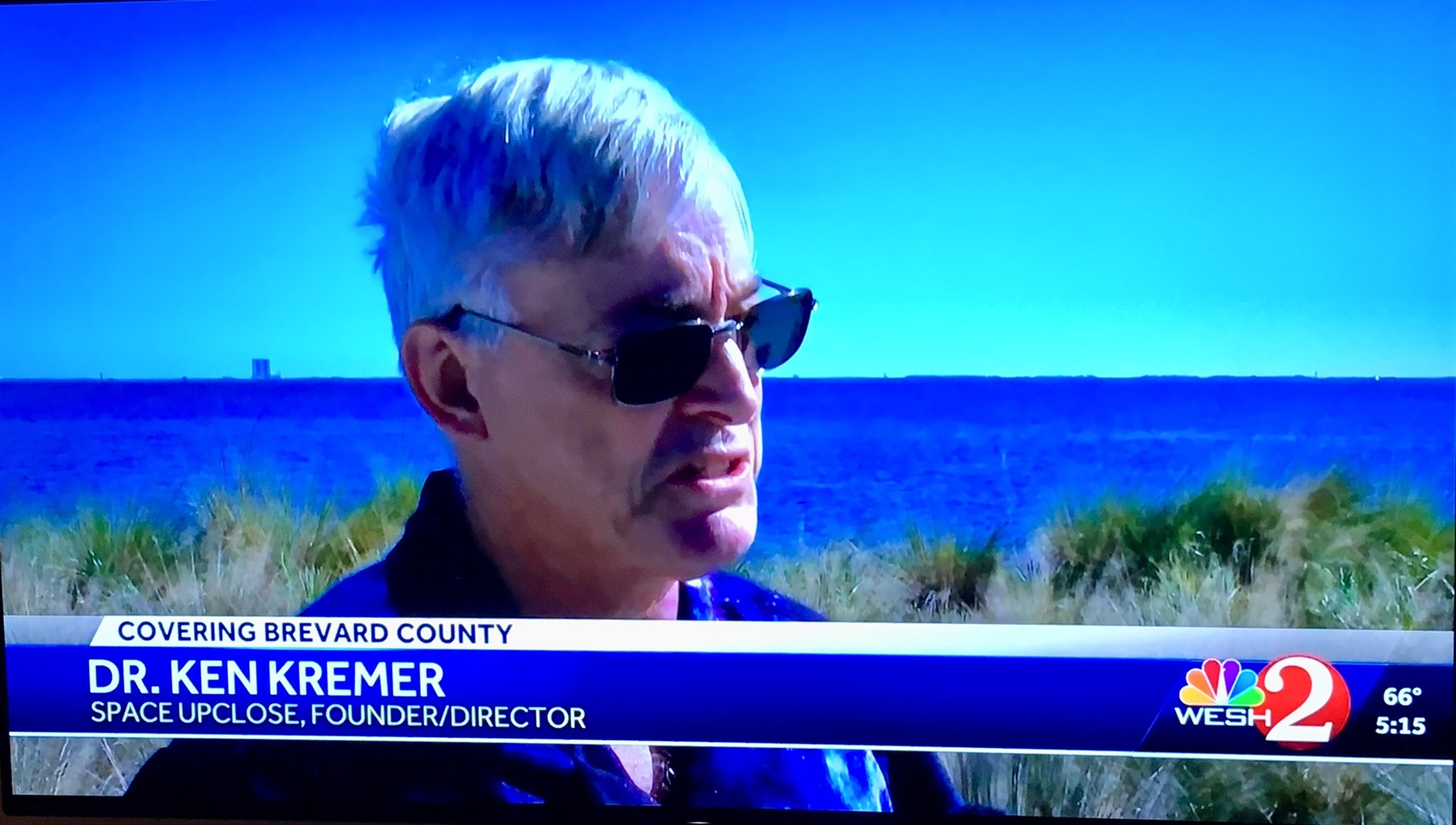
Watch Ken’s continuing reports onsite for live reporting of upcoming SpaceX and ULA launches in Jan/Feb 2020 at the Kennedy Space Center and Cape Canaveral Air Force Station.
Stay tuned here for Ken’s continuing Earth and Planetary science and human spaceflight news: www.kenkremer.com –www.spaceupclose.com – twitter @ken_kremer – email: ken at kenkremer.com
Dr. Kremer is a research scientist and journalist based in the KSC area, active in outreach and interviewed regularly on TV and radio about space topics.
………….
Ken’s photos are for sale and he is available for lectures and outreach events
